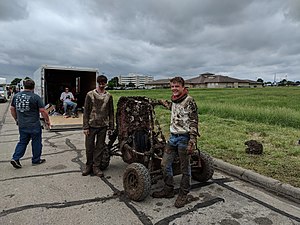A student design competition is a specific form of a student competition relating to design. Design competitions can be technical or purely aesthetic. The objective of technical competitions is to introduce students to real-world engineering situations and to teach students project-management and fabrication techniques used in industry. Aesthetic competitions usually require art and design skills.

Formula SAE is a student design competition organized by SAE International. The competition was started in 1980 by the SAE student branch at the University of Texas at Austin after a prior asphalt racing competition proved to be unsustainable.
Motorsport(s) or motor sport(s) are sporting events, competitions and related activities that primarily involve the use of automobiles, motorcycles, motorboats and powered aircraft. For each of these vehicle types, the more specific terms automobile sport, motorcycle sport, power boating and air sports may be used commonly, or officially by organisers and governing bodies.
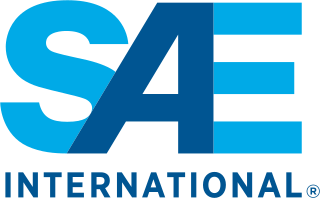
SAE International is a global professional association and standards organization based in Warrendale, Pennsylvania, United States. Formerly the Society of Automotive Engineers, the organization adopted its current name in 2006 to reflect both its international membership and the increased scope of its activities beyond automotive engineering and the automotive industry to include aerospace and other transport industries, as well as commercial vehicles including autonomous vehicles such as self-driving cars, trucks, surface vessels, drones, and related technologies.

Rashtreeya Vidyalaya College of Engineering is an autonomous private technical co-educational college established in Bangalore, India in 1963. RVCE is recognized as a center of excellence under Technical Education Quality Improvement Program by Government of India.

Formula Student is a student engineering competition held annually. Student teams from around the world design, build, test, and race a small-scale formula style racing car. The cars are judged on a number of criteria. It is run by the Institution of Mechanical Engineers and uses the same rules as the original Formula SAE with supplementary regulations.
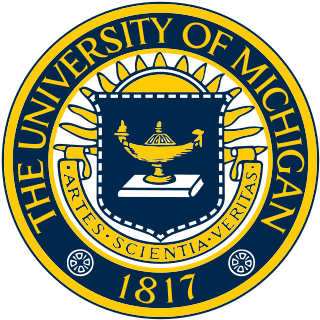
The University of Michigan College of Engineering, branded as Michigan Engineering, is the engineering college of the University of Michigan, a public research university in Ann Arbor, Michigan. Michigan Engineering has an enrollment of 7,133 undergraduate and 3,537 graduate students.

A concrete canoe is a canoe made of concrete, typically created for an engineering competition.

Veer Surendra Sai University of Technology, formerly known as the University College of Engineering, Burla, is a state university located in Burla, Sambalpur, Odisha, India. Established in 1956, it is the oldest engineering college in Odisha. UCE Burla, its former name, was officially changed to its current name on 10 June 2009, as a result of a resolution by the Government of Odisha to accord it with the status of a unitary university.
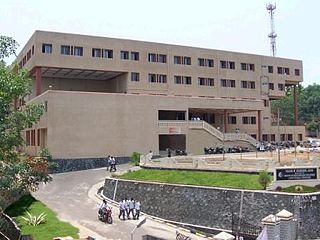
The Government College of Engineering, Adoor (CEA) is a college in Adoor, Pathanamthitta District, Kerala, India, located 3 km from the town centre at Manakala. It is affiliated with the APJ Abdul Kalam Technological University and is run under the aegis of the Institute of Human Resources Development, an institute of the government of Kerala. The College was inaugurated in 1995 by the Chief Minister of Kerala A K Antony. College of Engineering Adoor is recognized by the All India Council for Technical Education (AICTE). Recently the college has been selected in Technical Education Quality Improvement Programme (TEQIP) Phase II. It is one of the major engineering colleges in Pathanamthitta District and is one of the eight engineering colleges in the District.

The Chem-E-Car Competition is an annual college competition for students majoring in Chemical Engineering.
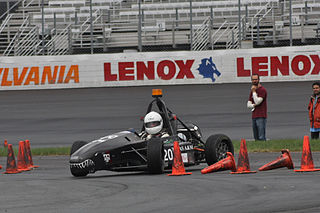
Formula Hybrid is a design and engineering challenge for undergraduate and graduate college and university students. Started at the Thayer School of Engineering at Dartmouth College, and sponsored by the Society of Automotive Engineers, the competition is a spinoff of the Formula SAE competition based on hybrid vehicle technology. They must design, build, and compete an open-wheel, single-seat race car. This car must conform to a formula which emphasizes drive train innovation and fuel efficiency in a high-performance application.

The 24 Hours of Lemons, sometimes styled as "24 Hours of LeMons", "24 Hours of LeMONS", or "24 Hours of LEMONS", is a series of endurance races held on paved road race courses across the United States. The series holds the Guinness World Record for the "Most participants in one race".
A basic utility vehicle (BUV) is a simple rugged vehicle designed for use in the developing world. A slew of such vehicles were developed in the late 1960s and early 1970s; most only reached limited production and market penetration, as used Western vehicles often proved cheaper. In Southeast Asia, these are often referred to as Asian utility vehicles (AUV). They have also been called basic transportation vehicles (BTV).
Refer here for more info - updated 2022 website https://www.RutgersFormulaRacing.com/

Missouri University of Science and Technology is a public research university in Rolla, Missouri. It is a member institution of the University of Missouri System. Most of its 6,456 students (2023) study engineering, business, sciences, and mathematics. Known primarily for its engineering school, Missouri S&T offers degree programs in business and management systems, information science and technology, sciences, social sciences, humanities, and arts. It is classified as a "STEM-dominant", R2 doctoral university with "high research activity".
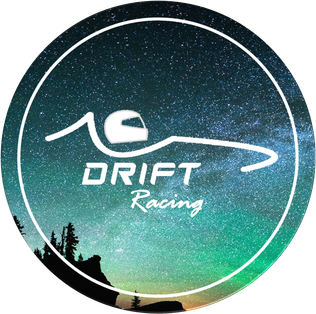
Drift Racing Team is the Formula ISIE Team of NIT Jamshedpur. It is a Student-led initiative in the institute to design, manufacture and race a Formula style F3 Electric car in various Formula ISIE events across the globe. It was founded in 2009 by Automobile enthusiasts, earlier one of the first SAE teams of the institute. Its current goal is to participate in the event of ISIE 6th Formula Imperial HVC- Electric Vehicle Category in the year 2020 to be held at Buddh International Circuit, Greater Noida.
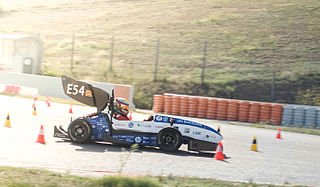
ETSEIB Motorsport is a motorsports team that represents the School of Industrial Engineering of Barcelona (ETSEIB) in the Formula Student competition. The team designs and constructs open-wheel cars to compete globally against other university teams.
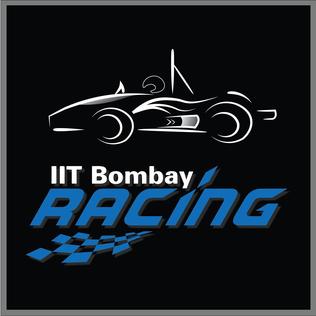
IIT Bombay Racing is a Formula Student team from India based at Indian Institute of Technology Bombay since 2007. The team consists of 70 members who aim to conceive, design and fabricate a formula style racecar through innovation to compete in international Formula Student events.

Pravega Racing is the official Formula-SAE Combustion team of VIT University, Vellore, India. The primary aim of the team is to design, manufacture, and test a single seater race car and compete in the Formula Student/FSAE events. The team consists of 40 inter-disciplinary undergraduates who have persistently worked towards building faster and lighter cars throughout the years since its inception and is majorly divided into two, namely the Technical and the Management Department. The team has participated in several National and International FSAE Events over the years conducted in USA (2010), Italy, Australia (2018), India, Hungary (2023) and Germany.




